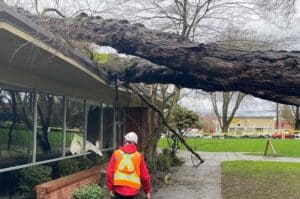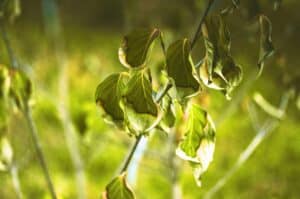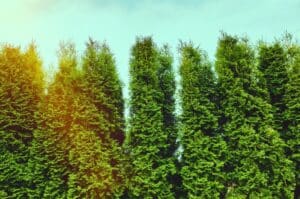Complete Storm Season Preparation Guide for Seattle Homeowners: Protect Your Trees and Choose the Right Arborist
Before the next storm hits Seattle, learn how to protect your trees, avoid property damage, and find the right Certified Arborist for lasting peace of mind.
As the breeze blows a bit colder and Seattle slowly begins its transition to winter, it’s hard to forget last year’s big storm. The November 2024 bomb cyclone that devastated neighborhoods from West Seattle to Wedgwood served as a stark reminder: even mature, valuable trees are vulnerable to our region’s increasingly severe winter storms. With two fatalities and over 500,000 power outages, this historic storm highlighted the critical need for both proactive tree preparation and access to qualified emergency tree services.
Key Takeaways
- Winter preparation steps, like scheduling a professional risk assessment, strategic pruning, and ensuring root zone protection, prevent the most storm damage.
- ISA certification and TCIA accreditation are the gold standards that separate qualified tree professionals from unregulated tree services.
- Recognizing red flags like door-to-door solicitation and cash-only requirements protects homeowners from costly scams and property damage.
- Emergency response protocols ensure safety and proper documentation when prevention isn’t enough to prevent storm damage.
Why Seattle Trees Are Vulnerable to Winter Storms
Seattle’s unique climate creates a perfect storm of conditions that threaten our urban forest. Our wet winters saturate soil around tree roots, while powerful wind systems from the Pacific create the destructive combination that toppled hundreds of trees during the recent bomb cyclone.
The mature trees that make neighborhoods like Capitol Hill, Wallingford, and Mercer Island so desirable also present unique challenges. These established trees often have compromised root systems from construction, age-related decay, or previous storm damage that isn’t visible from ground level.
EXPERT INSIGHT: “After 15+ years serving Seattle’s mature tree communities, I’ve learned that our wet winter soil conditions combined with our region’s sudden windstorms create the most dangerous scenario for tree failure. The key is identifying vulnerabilities before they become emergencies.” – Peter Gruenwoldt, Founder and ISA Certified Arborist at Seattle Tree Care
How to Protect Your Trees from Storm Damage
Protecting your trees from Seattle’s winter storms requires a systematic approach that addresses both visible and hidden vulnerabilities:
Schedule a Professional Tree Risk Assessment Before Storm Season
A Tree Risk Assessment Qualified (TRAQ) evaluation can identify structural weaknesses, root problems, and disease issues that make trees vulnerable to failure. This is especially critical for mature trees near homes in areas like Magnolia, where wind exposure from Puget Sound increases risk.
Schedule Professional, Strategic Pruning That Reduces Wind Damage
Professional dormant season pruning removes weak branches, reduces canopy weight, and improves tree structure. This isn’t the same as topping or aggressive cutting that can actually increase storm vulnerability.
Maintain Proper Root Zone Protection and Soil Stability
Proper mulching, soil decompaction, and drainage improvements help trees maintain stability during saturated soil conditions common in Seattle winters.
IMPORTANT TIP: Any tree work involving power lines, work above 10 feet, or trees showing signs of instability requires licensed professionals. Additionally, Seattle’s municipal codes require registered tree service providers for most commercial tree work, and many insurance policies require professional documentation for coverage.
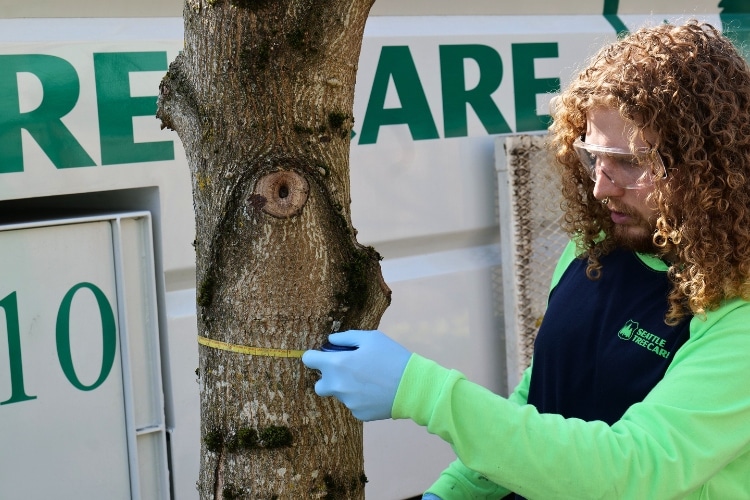
How to Find and Hire Qualified Tree Care Professionals in Seattle
The aftermath of any major storm brings an influx of unlicensed contractors and scam artists. Here’s how to identify legitimate, qualified tree care professionals who can properly protect your investment.
Essential Tree Service Credentials to Verify Before Booking
Choosing the right tree service in Seattle means more than comparing prices. Before scheduling any work, confirm that your contractor holds the proper certifications and city registrations, including:
- ISA Certified Arborist: This certification requires three years of full-time experience plus passing a comprehensive exam covering tree biology, pruning, disease management, and safety. Verify credentials directly through the ISA website.
- TCIA Accreditation: The Tree Care Industry Association accreditation involves rigorous business practice, safety, and quality standards. Seattle Tree Care is the first and only family-owned tree service in the Seattle area to earn this accreditation.
- TRAQ Qualification: Tree Risk Assessment Qualified professionals can properly evaluate hazardous trees and provide the documentation required for Seattle’s strict permit processes.
- Seattle Municipal Registration: The City of Seattle maintains a registry of approved tree service providers who meet insurance, licensing, and competency requirements.
What Questions Should You Ask Before Hiring a Tree Service?
- Can you provide proof of ISA certification and current insurance?
- Do you handle permit applications and city notifications?
- What does your guarantee cover and for how long?
- Can you provide local references from the past year?
Warning Signs to Watch for When Hiring a Tree Service Company
- Door-to-door solicitation, especially after storms
- Cash-only payment requirements
- No verifiable credentials or licensing
- High-pressure tactics or “limited time” offers
- Significantly lower bids without clear explanation
What Should You Do When Trees Are Damaged in Storms?
Even with proper preparation, severe storms can cause tree damage requiring immediate professional response. Here’s how to respond safely and effectively:
- Stay away from downed power lines and any trees in contact with wires
- Don’t attempt to remove large branches or debris yourself
- Check for structural damage to your home before entering affected areas
- Document damage with photos for insurance claims
When to Call Professionals vs. 911 for Tree Damage Emergencies
Call 911 for immediate life safety threats, downed power lines, or blocked emergency access routes. For non-emergency tree damage, contact qualified tree services, like Seattle Tree Care, which maintains 24/7 emergency response capability.
Document Storm Damage for Insurance Purposes
Photograph the damaged tree from multiple angles, showing both the tree and any property damage it caused. If available, provide photos showing the tree’s condition before the storm to establish whether damage was storm-related or due to pre-existing conditions. Keep all professional assessment reports, emergency service receipts, and written estimates, as insurance companies often require documentation from qualified arborists to process tree-related claims. Take photos immediately after the storm for the strongest insurance claim support.
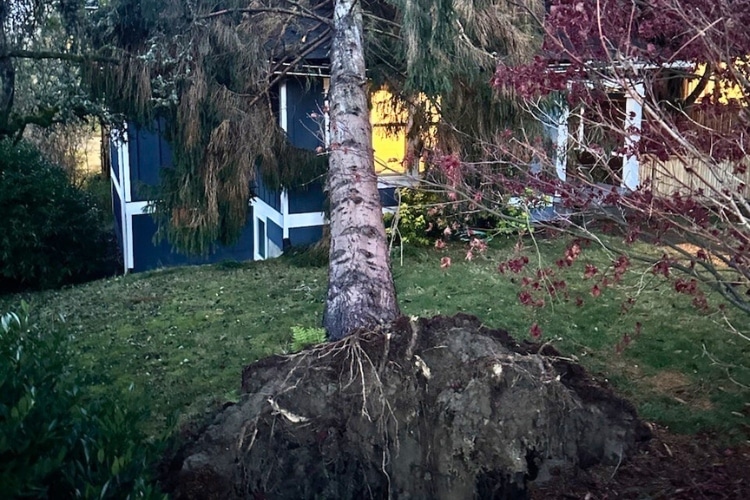
This uprooted weeping willow was one of the many devastating results of the November 2024 bomb cyclone that caused widespread tree failures across Seattle neighborhoods. Photos like this from multiple angles are essential for insurance documentation and claims processing.
Frequently Asked Questions About Storm Preparation for Trees in Seattle
When should Seattle homeowners start preparing trees for winter storms?
Begin preparation in early fall, ideally September through November. This timing allows for proper pruning during dormant season and completion of any structural support installation before peak storm season arrives. King County Emergency Management recommends completing all outdoor preparation by December.
What’s the difference between ISA-certified and just “licensed” tree services?
ISA certification demonstrates technical competency in arboriculture, while licensing only confirms legal business operation. ISA certification requires three years of experience, comprehensive testing on tree biology and care practices, and ongoing education requirements. Basic licensing may only require business registration and insurance.
How quickly should I expect an emergency response after a storm?
Response times depend on storm severity and company capacity. For life-threatening situations (trees on houses or power lines), qualified services should respond within 2-4 hours. Non-emergency damage typically gets initial assessment within 24-48 hours, though actual work may be scheduled days later depending on crew availability and damage extent.
What questions should I ask about cleanup and debris removal?
Ask whether complete debris removal is included or costs extra, if stump grinding is part of the service, how they’ll protect your landscaping during work, and what “complete cleanup” specifically includes. Also, verify if they handle disposal fees and permits, and whether they can chip branches into mulch for you to keep.
Protect Your Trees from Winter Storm Damage with Help from Seattle Tree Care
Don’t wait for the next storm to discover your trees aren’t ready. Seattle Tree Care’s TCIA accreditation and team of ISA Certified Arborists ensure your trees receive the expert care they deserve.
Call 206-222-0687 for your free assessment or request an estimate online to get started today.
SEE MORE ARTICLES FROM OUR b(LOG)
We've got you covered with tips, resources, updates, how-to's, and other helpful information about trees and landscapes in Seattle, Puget Sound, and King County, WA. Join the thousands of smart local residents who get the monthly newsletter from Seattle Tree Care for helpful information you won't want to miss!
There's no spam - we promise! We are committed to keeping your e-mail address confidential. We do not sell, rent, or lease our contact data or lists to third parties.


